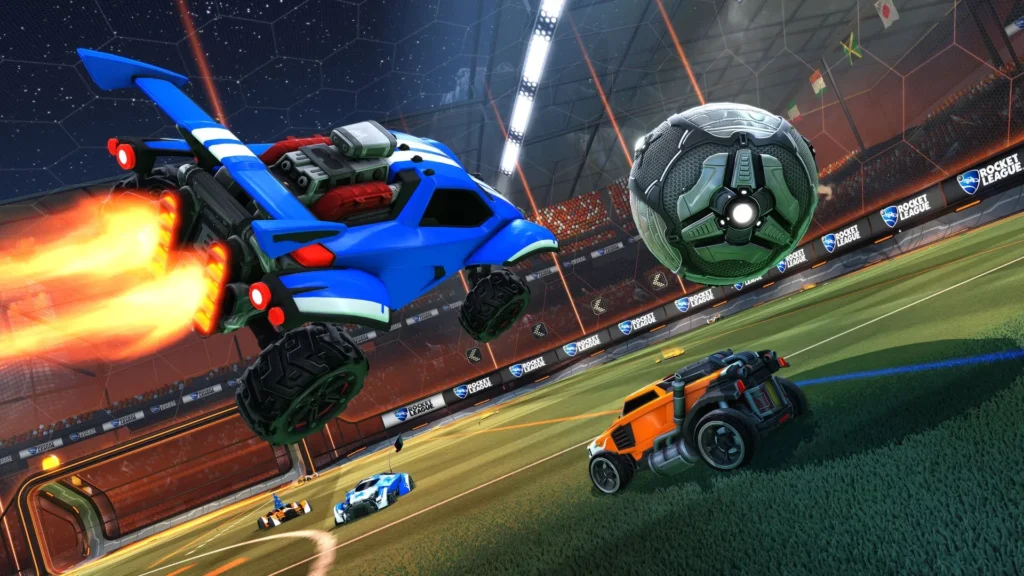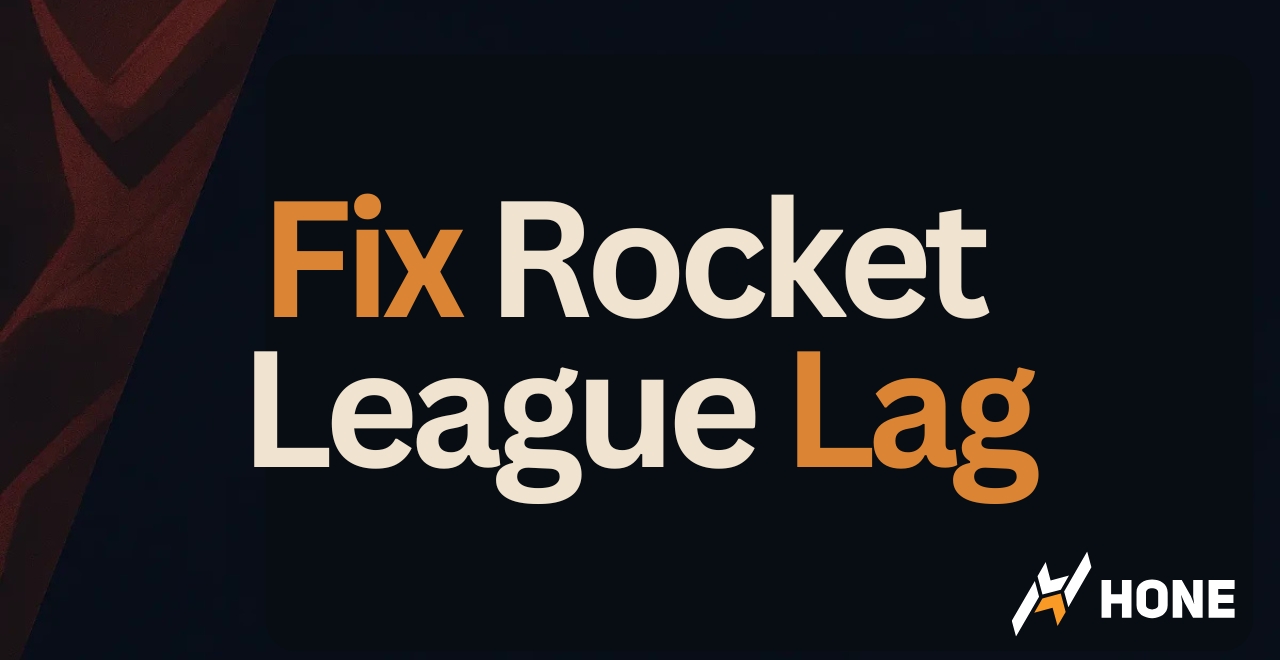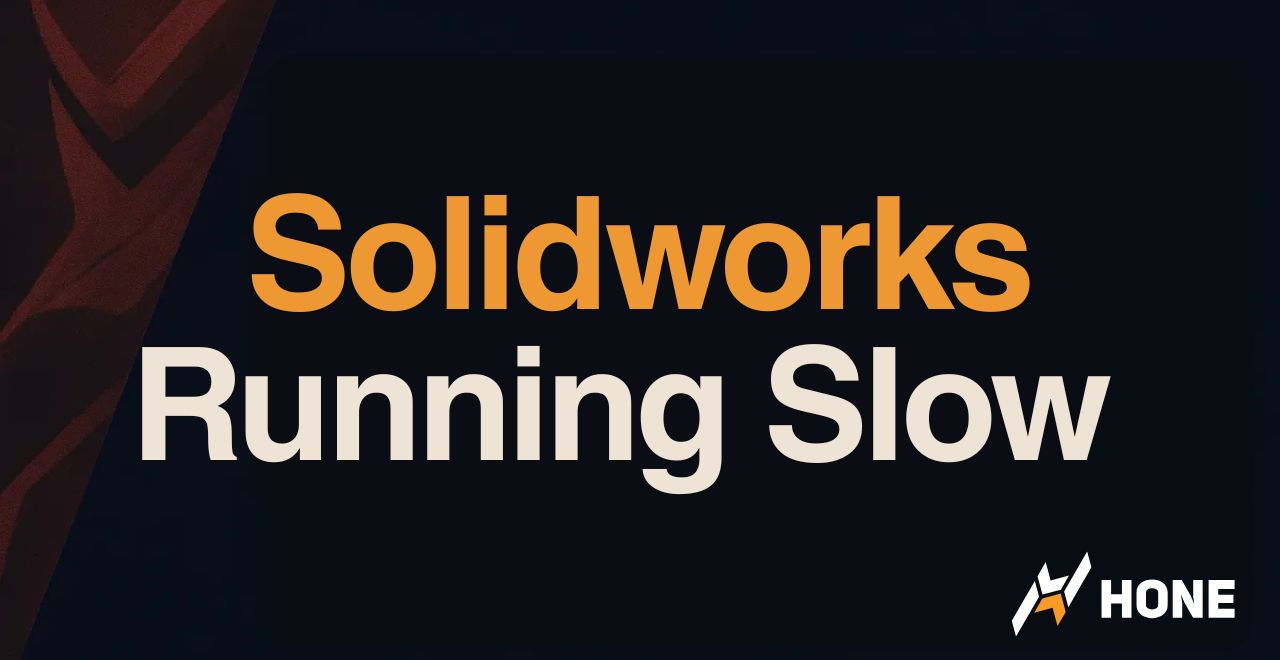Your car feels like it’s driving through molasses. The ball phases through your perfectly-timed aerial. That game-winning save? The server decided you weren’t even close. Welcome to the frustrating world of Rocket League lag; a phenomenon that’s plagued players since 2015 and continues to evolve with each update.
Unlike generic “game lag,” Rocket League’s issues stem from its unique cocktail of aging technology, precise physics demands, and the inherent challenge of synchronizing high-speed car soccer across the internet.
This is about Unreal Engine 3’s two-decade-old foundation, deterministic physics simulation, and the notorious “Heavy Car Bug” that developers won’t officially acknowledge.
Rocket League’s Technical DNA
Why Rocket League Isn’t Like Other Games

To understand why Rocket League lags, we need to understand what makes it technically unique. This isn’t Counter-Strike with hitscan weapons or Fortnite with building mechanics.
Rocket League demands frame-perfect precision for aerial maneuvers while synchronizing complex physics interactions between eight players, all built on an engine from the George W. Bush administration.
Psyonix chose Unreal Engine 3 due to their familiarity from working on Unreal Tournament. While pragmatic in 2015, this decision now means Rocket League runs on technology from 2004. The community describes UE3 as “on life support,” with each update potentially introducing new bugs due to the aging codebase.
The integration of Bullet Physics into UE3 was crucial for achieving deterministic networked physics, meaning the same inputs always produce the same results. Developer Jared Cone detailed this at GDC, explaining how both client and server must simulate physics identically. This precision is what makes Rocket League’s physics feel so satisfying, but it also makes any desynchronization immediately noticeable.
The community actively debates migrating to Unreal Engine 5, which could support 120-tick servers and modern networking features. However, such a migration would be monumental; essentially rebuilding the entire game while preserving its precise physics feel.
How Rocket League’s Netcode Works
Documented Rocket League Lag Issues That Still Haunt Players
Rocket League’s lag issues aren’t new phenomena. Over the years, specific problems have emerged, been documented, sometimes fixed, and occasionally resurface.
@dxrk1_1 games been laggy cant even play fr #rocketleague #rlclips #fyp #rocketleaguehighlights #rl
♬ I3.5 – S0üls
Knowing this history helps identify whether your current lag stems from an old nemesis or something new.
What Players Experience: The car suddenly feels unresponsive, as if someone increased gravity or added resistance. It can happen mid-game, regardless of ping. Some report it lasting entire sessions, others say it comes and goes.
Community Theories:
- Server-client desynchronization causing input lag
- Mismatches between 120Hz physics and 60Hz network updates
- Windows FastBoot or BIOS settings interfering
- V-Sync secretly enabling despite being set to “off”
- Input buffer issues with medium ping (100-200ms)
Attempted Fixes That Players Report:
- Process Lasso CPU affinity tweaks
- Disabling network adapter in free play, then re-enabling
- Forcing DirectX 11 mode
- Modifying TapTime and DoubleTapTime in Input.ini
- Installing custom operating systems or debloated GPU drivers
The Verdict: HCB likely isn’t one bug but multiple issues producing similar symptoms. The lack of official acknowledgment frustrates players, but the subjective nature and varied causes make it difficult to diagnose definitively.
The Three Pillars of Rocket League Lag
After analyzing Rocket League’s architecture and history, lag causes fall into three main categories. Each requires different diagnostic approaches and solutions.
Root Causes:
- Geographic distance to servers
- ISP “scenic routing” (especially Middle East)
- Server overload during tournaments
- 60Hz update rate vs 120Hz physics
- Peering point congestion
Symptoms:
- High ping on scoreboard
- Ball teleporting/rubber-banding
- Ghost touches (hit ball but server says no)
- Worse during peak hours (7-11 PM)
Root Causes:
- Wi-Fi instability and interference
- Hardware bottlenecks (CPU/GPU)
- Background processes consuming resources
- Incorrect graphics settings
- Platform-specific bugs (Xbox 120 FPS)
Symptoms:
- Low/unstable FPS
- Input delay despite low ping
- Stuttering during intense action
- Platform-specific issues
Root Causes:
- UE3 limitations and technical debt
- Input buffer behavior (IBuf issues)
- Client prediction errors
- Physics sync complexity
- Netcode reconciliation problems
Symptoms:
- Heavy Car Bug sensations
- Inconsistent car feel
- Input buffer misses
- Prediction/reconciliation jitter
Rocket League’s Performance Metrics

Before diving into fixes, you need to understand what’s actually happening. Rocket League provides detailed performance graphs on PC that reveal the true nature of your lag.
Here’s what each metric tells you about your specific problem.
| Metric | What It Measures | Good Range | Problem Indicators |
|---|---|---|---|
| FPS | Frames rendered per second | ≥ Monitor refresh rate | <60 FPS causes stuttering |
| Latency | Round-trip time to server (true ping) | <60ms | 100ms+ noticeable delay |
| IBuf | Server’s input buffer queue | 1-2 frames | High values = input lag |
| IBuf Miss | Buffer underruns (negative) or overflows (positive) | 0 | Any value = sync issues |
| Frame Time | Total time to produce one frame | ~16.7ms (60 FPS) | Spikes = stuttering |
| Packet Loss | Data packets not reaching destination | 0% | Any loss = problems |
Critical fact: Rocket League’s scoreboard ping is only accurate at exactly 60 FPS. At higher framerates, it shows artificially inflated ping. At lower framerates, it shows impossibly low values (even 0ms at 15 FPS).
This means PC players running at 144+ FPS will see incorrect high ping on the scoreboard, potentially wasting time troubleshooting non-existent network issues. Always use the Network Graph’s “Latency” metric for accurate readings.
Input Buffering
One of Rocket League’s most misunderstood features is its input buffering system. These settings fundamentally change how the game handles your inputs, especially under imperfect network conditions.
Choosing the wrong one can make lag significantly worse.
| Setting | How It Works | Best For | Avoid If |
|---|---|---|---|
| Legacy | Original method. Server may repeat inputs if buffer empty | Perfect connections (0% loss, stable ping) | Any instability causes desyncs |
| STS | Sim Time Scaling: Subtle speed adjustments to maintain sync | Most connections, minor instability | Very stable connections (unnecessary) |
| CSTS | Continuous STS: Aggressive, constant adjustments | Poor connections, high packet loss | Stable connections (causes speed fluctuations) |
Jared Cone revealed that with Legacy buffering, if the server’s input buffer runs empty, it repeats your last input. This causes “minor desyncs” because client and server are no longer processing inputs 1:1.
This is why Legacy can feel terrible on unstable connections; the server is literally making up inputs that you never sent. STS and CSTS avoid this by adjusting game speed instead, which Cone described as “much smarter.”
Fixes for Every Type of Rocket League Lag

Now that we understand the causes, here are proven solutions organized by priority and effectiveness. These are specific to Rocket League’s architecture and verified through developer documentation and community testing.
Switch to Wired Ethernet
- Connect ethernet cable directly to router
- Disable Wi-Fi adapter to prevent conflicts
- Test with ping command for stability
Configure Input Buffering
- Check IBuf Miss in performance graphs
- Negative misses = switch from Legacy
- Try STS for most connections
- Use CSTS only for very poor connections
Disable V-Sync Properly
- Set V-Sync OFF in game menu
- Toggle it ON then OFF to ensure it sticks
- Disable in GPU control panel too
- Verify with input lag tests
Select Optimal Server Region
- Test each region in free play
- Monitor latency in network graph
- Choose lowest consistent ping
- Avoid regions with packet loss
Optimize Graphics for FPS
- Lower all settings if FPS unstable
- Cap FPS at stable value (120/144)
- Monitor Frame Time for spikes
- Close background applications
Platform-Specific Fixes
- Xbox: Delete excess replays if sync fails
- All platforms: Sync system clock
- Check patch notes for regressions
- Update to latest game version
Advanced PC Tweaks
- Process Lasso for CPU priority
- Force DirectX 11 mode
- Disable Windows FastBoot
- Update all drivers (GPU, network, chipset)
Heavy Car Bug Mitigation
- Restart game every few hours
- Clear game cache/verify files
- Try different USB ports for controller
- Some report network adapter toggle helps
If you’ve exhausted client-side fixes and still experience consistent issues, your ISP may be the culprit. Contact them when:
- Packet loss occurs to multiple destinations (not just Rocket League)
- Lag is worse during specific hours (indicates congestion)
- Traceroute shows issues at ISP hops
- Problems persist across different devices
Provide specific data: ping tests, traceroutes, and times when issues occur. Some ISPs throttle gaming traffic or have poor peering agreements that affect routing.
Will Rocket League’s Lag Ever Be “Fixed”?
The hard truth is that some of Rocket League’s lag stems from fundamental architectural decisions made a decade ago. Until Psyonix addresses these core issues, players must work within the current system’s constraints.
Community hopes for a UE5 migration represent more than graphics improvements. Players believe it could enable:
- 120-tick servers matching the physics rate
- Modern networking with better prediction
- Elimination of legacy UE3 bugs
- Improved multi-threading for better performance
However, the migration would be monumental. Psyonix would need to preserve the exact physics feel while rebuilding on entirely new technology. The risk of “breaking” what makes Rocket League special is significant.
- Enable Performance Graphs (PC) – Settings > Interface > Performance Graphs
- Identify Lag Type:
- High Latency = Network/Server issue
- Low FPS = Client hardware issue
- IBuf problems = Input sync issue
- Inconsistent feel = Possible HCB
- Test Systematically:
- Free Play (eliminates server variables)
- Different times of day
- Multiple server regions
- With/without background apps
- Document Patterns:
- When does it occur?
- Which metrics spike?
- What temporarily fixes it?
Making Peace with Imperfection
Rocket League’s lag isn’t just “bad internet” or “potato PC.” It’s a complex interaction between 20-year-old engine technology, deterministic physics demanding perfect synchronization, and the inherent challenges of real-time competitive gaming over the internet.
While we wait for potential engine upgrades or revolutionary networking improvements, the combination of proper diagnostics, targeted fixes, and realistic expectations remains our best defense.
The game’s technical debt may be substantial, but so is its unique physics-based magic. Until Psyonix finds a way to modernize without sacrificing what makes Rocket League special, we’ll continue this delicate dance between precision and latency, one carefully-timed aerial at a time.
FAQs
Is the Heavy Car Bug real or placebo?
While Psyonix hasn’t officially acknowledged it, thousands of players report consistent symptoms. It’s likely multiple issues (input lag, desync, system instability) producing similar feelings. The debate continues, but the experiences are real to those affected.
Why does Rocket League use such an old engine?
Psyonix chose Unreal Engine 3 due to familiarity from Unreal Tournament development. While dated (2004), migrating to UE5 would require essentially rebuilding the entire game while preserving precise physics; a massive, risky undertaking.
Should I always use CSTS input buffering?
No. CSTS is for poor connections with high packet loss. On stable connections, it causes unnecessary speed fluctuations. Use Legacy for perfect connections, STS for most situations, and CSTS only when necessary.
Why is my ping wrong on the scoreboard?
Rocket League’s scoreboard ping is only accurate at exactly 60 FPS. Higher framerates show inflated ping, lower framerates show impossibly low values. Use the Network Graph’s “Latency” metric for true readings.
Can server-side lag happen with low ping?
Yes. Low ping only measures network latency. Server processing delays, physics simulation bottlenecks, or replication issues can cause lag even with excellent ping. This is why IBuf metrics matter.
Will Rocket League ever get 120-tick servers?
Unlikely without an engine upgrade. Psyonix found their “sweet spot” with current settings. Higher tick rates might require UE5 migration and could fundamentally change how the game feels.
Why do updates sometimes make lag worse?
The aging UE3 codebase means new features can introduce bugs. Platform-specific regressions (like Xbox 120 FPS breaking) show how fragile the system is. Each update risks destabilizing existing code.
Is Wi-Fi really that bad for Rocket League?
Yes. Rocket League’s physics demand consistent, low-latency communication. Wi-Fi’s inherent packet loss and interference make precise physics synchronization nearly impossible. Ethernet is essentially mandatory for competitive play.






 Discord
Discord
 Instagram
Instagram
 Youtube
Youtube
 TikTok
TikTok